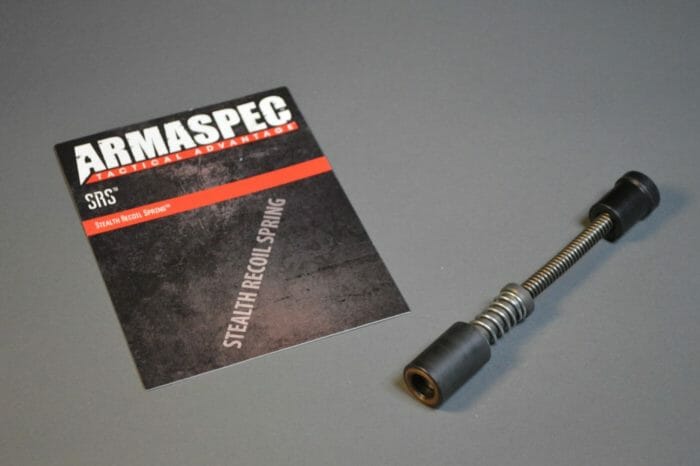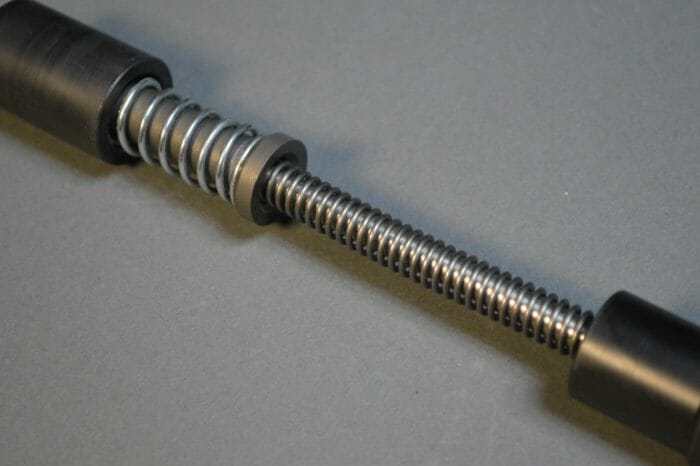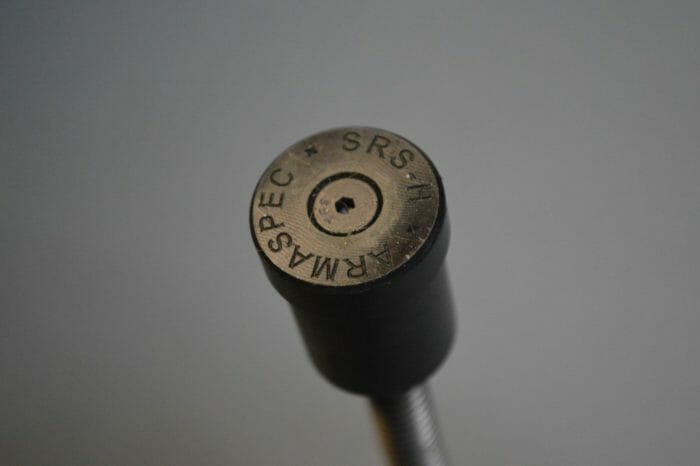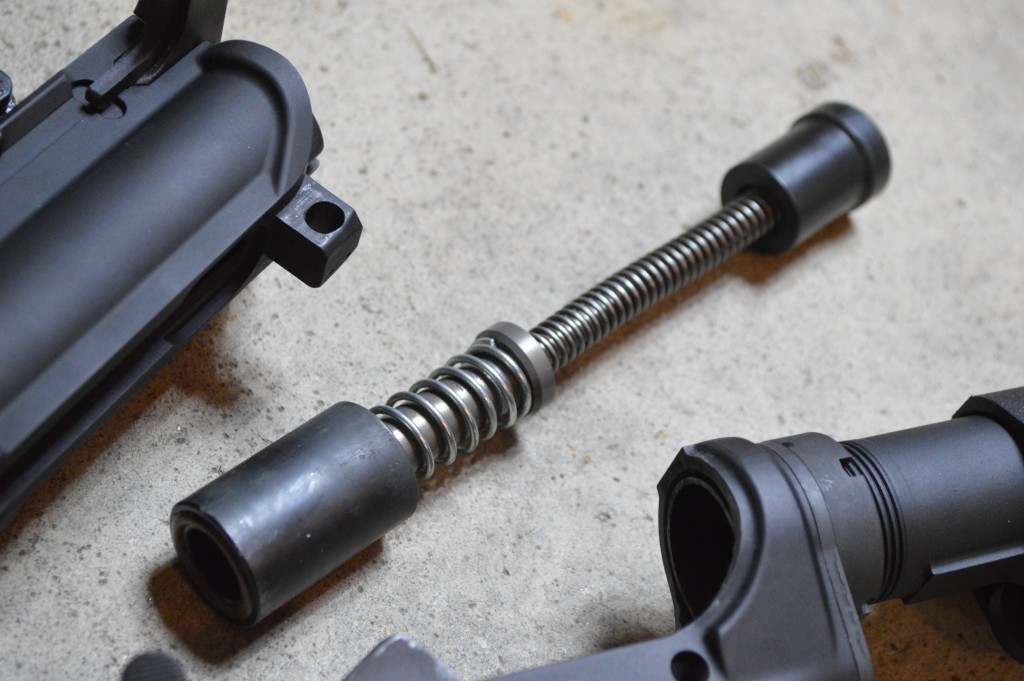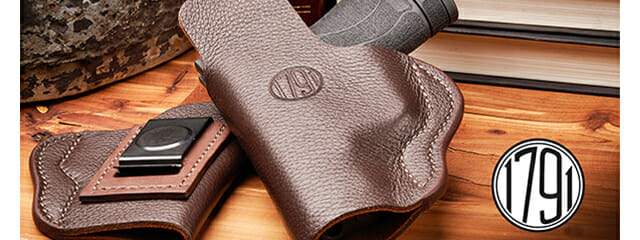Armaspec Stealth Recoil Spring Review
As someone who reviews, owns, and generally enjoys shooting with suppressors, I’m always on the hunt for accessories and modifications that can make my firearms quieter. In this journey, one significant truth I’ve discovered is that no matter how excellent a silencer performs, it will always be undermined by the noise the rifle’s action produces as it cycles with each shot. With AR-15 type rifles this is especially true since the firearm’s design places a large spring and buffer inside of a tube that sits right off shooters’ dominant-side ears. Thus, these rifles have come to be known for the “sprong” sound that the buffer spring makes during compression and decompression.
A handful of companies offer products that try to tackle this “issue”. One of the most popular is JP’s Silent Captured Spring – a self-contained system that keeps the buffer and spring from rubbing against the walls of the receiver extension. It’s a simple, but effective solution that also costs a pretty penny at around $130 (or over $170 for the heavy buffer version). No matter how effective it might be, paying that sort of money to replace parts that work perfectly fine (if loudly) was always difficult for me to justify. For that reason, I was incredibly excited to see Armaspec announce their Stealth Recoil Spring (SRS) earlier this year. Though it is conceptually similar to JP’s product, the SRS isn’t just a cheaper copy. It sports some significant differences that, in some ways, make it more appealing. Eager to check it out, I recently contacted Armaspec, who agreed to send an SRS to me for examination.
Installation
You won’t find many accessories or parts that are easier to install than the SRS. Simply hinge open your upper receiver, remove your existing buffer and spring, and replace them with the Armaspec unit. I do recommend removing your buffer retaining pin before installing the SRS as I’ve found that with it in place, removing the Stealth later on can be challenging and may require a flathead screwdriver to depress the pin.

Design
From a design standpoint, the SRS is very reminiscent of the popular JP Silent Captured Spring. Conceptually, it operates the same way by providing a captured buffer spring and buffer with a guide rod to keep everything aligned. The front of the buffer has a rubber O-ring that helps to reduce metal contact between the carrier and the buffer weight and keeps the spring under constant tension. The most significant difference is that the SRS uses a dual-spring configuration and JP chose a single spring with a rubber buffer to dampen impact at the carrier’s rearmost position. Second, the SRS features interchangeable buffer weights to tune action speed whereas JP’s system can be tuned to a greater degree using interchangeable buffer weights and springs. I haven’t tried the JP Silent Captured Spring, so I cannot call a winner here, but I definitely prefer the dual spring approach over the rubber buffer as the latter is more likely to break down after long-term usage.
Changing the SRS’s buffer weights is very easy. At the rear of the unit, you’ll find a 3/32” hex screw. Simply loosen it to separate the buffer’s base from the guide rod. Well, it isn’t quite that easy. You see, if you just try to loosen the screw, chances are good that you’ll also rotate the guide rod – getting you nowhere. If you depress the buffer slightly, you’ll find a cross hole (also 3/32”) drilled in the guide. Place another hex key through the hole and hold it still as you loosen the screw on the unit’s backside. Once the end and guide rod are separated, both springs and the buffer weight will slide right off.
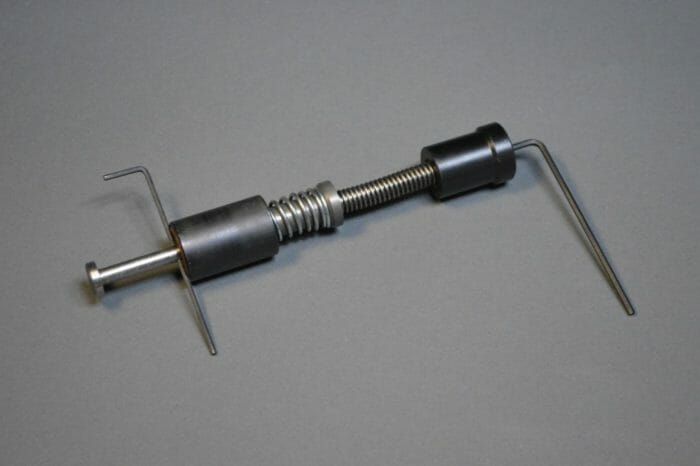
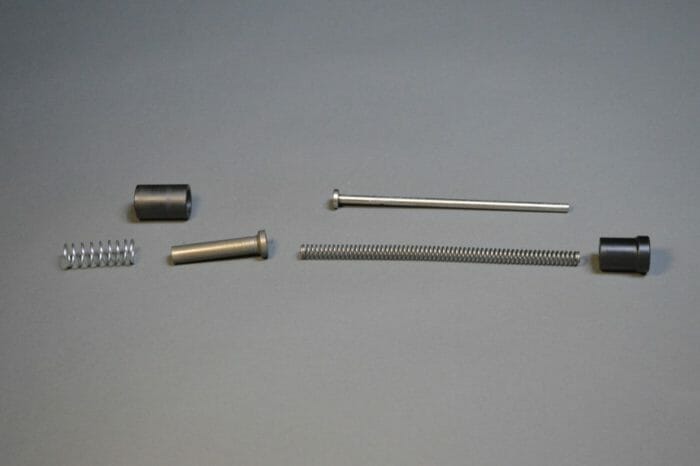
Performance
If you’re looking for the SRS to suddenly silence your AR’s action, you might be disappointed. It certainly does eliminate the “sprong” sound commonly associated with AR buffer springs. It also prevents the buffer and bolt carrier from banging against the walls of the receiver extension. Both improvements make the action quieter. However, the bulk of the noise that comes from an AR’s action manifests at the ejection port, where gasses escape after leaving the gas tube and bolt carrier. The SRS does not (and cannot) do anything about this noise.
Though I was first interested in the SRS to help quiet my rifle’s action, I quickly found that the most noticeable improvement was the round-to-round consistency it provided. With the standard buffer and spring, ARs tend to be somewhat “bouncy” when they cycle. There’s a degree of inconsistency in operation – much of which can be attributed to the buffer system. With the SRS, the carrier travel is straight back and straight forward. There’s simply no wobble at all in the system. This is clearly thanks to the fact that the SRS guide rod also acts as a stabilizer/guide for the bolt carrier. I really hate to make the comparison, but the rifle sort of feels like a sewing machine with the SRS installed. Everything, from the carrier, to the buffer, to the buffer spring is just very well under control. Subjectively, I felt that the more consistent recoil led to less muzzle flip and marginally quicker follow-up shots.
Reliability was no problem with the SRS. It simply dropped in and worked from the first round. After some discussion with Armaspec and deliberation of my own, I opted for the SRS-H, which is comparable to a 3.8-ounce heavy buffer. Armaspec also makes 3.3, 4.7, 5.3, and 5.6-ounce versions as well as a 5.7-ounce .308 model. I tested mine with my 16″ SR-15 upper, my 10.5” upper, and my 8.5” .300 Blackout upper, all with and without suppressors, so I certainly covered the gamut of AR-15 options.
Is the SRS worth the $80 price? I’m going to say yes – for the most part. It wouldn’t typically be the first upgrade I’d make to most rifles, but if you already have a decent optic, a free-float rail, and perhaps an upgraded trigger and/or muzzle device, the SRS may well be the part you need to get the most out of your firearm. There’s no question it makes AR-15 style rifles even more pleasant to shoot and the SRS makes loads of sense for suppressed shooters who want to cut down on as much action noise as possible. All in all, it is a subtle, but worthwhile upgrade that is well priced in comparison to market alternatives.
An information security professional by day and gun blogger by night, Nathan started his firearms journey at 16 years old as a collector of C&R rifles. These days, you’re likely to find him shooting something a bit more modern – and usually equipped with a suppressor – but his passion for firearms with military heritage has never waned. Over the last five years, Nathan has written about a variety of firearms topics, including Second Amendment politics and gun and gear reviews. When he isn’t shooting or writing, Nathan nerds out over computers, 3D printing, and Star Wars.

